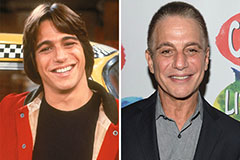Well-crafted editing could possibly be the difference between a poor documentary and a fantastic one.
Editing is a vital step of all motion pictures, because it is the stage when raw footage transforms into the final item. This stage is especially necessary for documentary films, however. This is because the majority of narrative movies are going to be edited to fit around the pre-defined storyboard and script. On the other hand, documentary filmmakers commonly go into their shoots with just a rough pre-planned notion of whatever they will make, with the remainder of the tale being unbeknownst until they actually film it. James Rogan will be well aware that this could imply that documentary directors and producers might be sitting on hundreds of hours' worth of footage without any established narrative. The initial step is to back-up all of it because any moment could turn out to be utilised in the final documentary. Following this, all footage needs to be watched with accompanying notes being written to pinpoint the best moments. This should take place at exactly the same time as going through archive material, pictures, and music to determine what is the most useful fit for the documentary.
Editing has progressed considerably through the length of film history. In reality, the entire explanation the medium is known as film is because of the material that movies were filmed on. This material is edited by hand, with editors chopping and pasting camera shots together. These days many films are actually digital, meaning most of the editing is completed on the computer. Morgan Matthews will know that many documentary filmmakers are well-acquainted with editing software. Once all possible elements of the film are added to their selected software, it is time to begin trying out laying the very best shots in to a timeline. Moments that reveal key information and will be the emotional core of the documentary are the best to make use of. Seeing what really works and does not work during this period will help establish the foundation of the documentary.
Individuals are attracted to viewing documentaries because they desire to learn something. Nonetheless, this does not always mean that documentaries ought to be dry lectures. Individuals are also looking to have fun while learning the information via a narrative structure. Tim Parker should be able to tell you that choosing the narrative and locating elements that fit the narrative is one of the most crucial phases within the film editing process. Even the most gorgeous shots blended with the most remarkable archive footage will be meaningless if linked together with no clear narrative. Many filmmakers will create a long first cut version of their documentary when they established the narrative. They are going to then undergo the process of refining and re-editing it till it becomes a viewable size while accomplishing the objectives that the filmmaker set out to attain.
 Tony Danza Then & Now!
Tony Danza Then & Now! Angus T. Jones Then & Now!
Angus T. Jones Then & Now! Heath Ledger Then & Now!
Heath Ledger Then & Now! Mackenzie Rosman Then & Now!
Mackenzie Rosman Then & Now! Kerri Strug Then & Now!
Kerri Strug Then & Now!